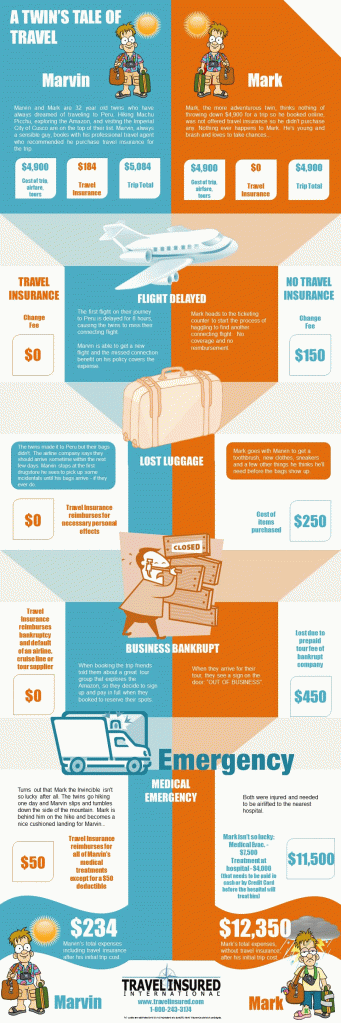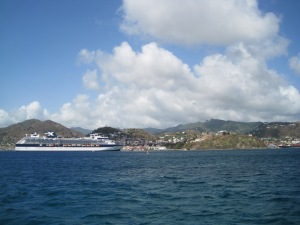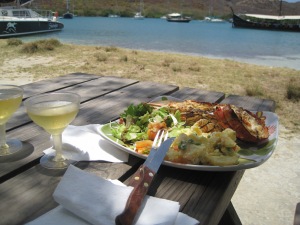Whenever I travel, I always have that feeling that I forgot something as soon I check in at the airport. Often times, whatever I left behind wasn’t really that important and can easily be replaced with a quick trip to the store at my destination.
But sometimes I head to places where a convenience store just isn’t on the itinerary.
These days, whether I’m headed on a leisure trip somewhere in the U.S. or off on a TDY assignment in Southwest Asia, there are the top ten things that I do not travel without.
1. A small medicine kit which includes essentials like Imodium, Mylanta, Melaleuca Sustain Sport (to replenish electrolytes and keep me hydrated!) and painkillers. 
You never know where you’ll be when your gastrointestinal system betrays you. The last thing I want to deal with is how and where to find the remedy!
2. An airplane neck pillow.
I fly economy, sometimes premium economy, and it will be a long time before we will see lie-flat seats in the main cabin. Which means lots of preventable kinks in necks. If Leonardo DiCaprio isn’t too good for a neck pillow, neither am I!
3. Wet Ones Hand Wipes. Hand Sanitizer may kill bacteria, but it doesn’t clean your hands and actually remove any debris or residue you might have on them from touching doors, subway handles, clothes, etc. I don’t go anywhere without ’em. ANYWHERE.
4. Melaleuca Revive Fabric Freshener Spray. Think Febreeze, but with serious staying power. After a few days on the road and limited clothes in rotation, this liquid miracle keeps my clothes smelling fresh and clean. I’ve even used it on jeans and a sweater which reeked of a grassy substance (not mine!) after a Jay-Z concert; it was like they had just came out of the wash! As an added bonus, it also acts as a wrinkle remover. I just pour what I need into a travel spray bottle and off I go.
5. A scarf. A large pashmina-type scarf can come in handy for all kinds of occasions. It can be draped around the shoulders for warmth in the evening, used as a shoulder/head covering when visiting certain houses of worship, worn around the neck for style, used as a bag cover, worn as a belt…the possibilities are pretty  much endless.
much endless.
6. Dry Shampoo. Washing your hair every day can be drying and hard on your hair, and in between washes I like to make sure that my hair looks and feels clean as if it were first washed. This dry shampoo from Oscar Blandi is a staple in my travel bag. It’s paraben-free and I LOVE that it smells like lemons!
7. Ear plugs. I cannot over-emphasize this one. Not only are they great to block out some of the ambient sound in the main cabin of the airplane (or the awful snorer two rows over), but they are also great to mute out noise at my hotel. Whether its street noise, calls to prayer, or just the settling of the building, I’m more apt to hear everything the first couple of nights. These are so small and for a few dollars are worth every penny when it comes to preserving my sanity.
8. Extra canvas tote bag/reusable shopping bag. It’s not uncommon to pick up a few extra goodies when you’re on vacation. When it’s time to come home, I use the extra bag as a carry-on with any extra stuff that won’t fit into my checked luggage.
9. My iPad mini. Using he Nook app from Barnes and Noble, I can keep current on my reading without lugging four books around, which takes up valuable space in my carry-on. I also use the iPad to store photos which frees up space on my iPhone which acts as my primary camera. On shorter trips, I prefer to just travel with the iPad mini and leave the MacBook at home.
10. A handful of Melaleuca Attain Bars. Not only do they make great snacks on the road to curb hunger, the bars are also super easy to pack. I often stuff a few in my carry-on and stash the rest in the nooks and crannies of my checked bag. They’re packed with protein to keep me going when my next meal is still a few hours away, and are far more nutritional than munching on a sugar-packed granola bar.
Do any of these make your “must pack list?”






